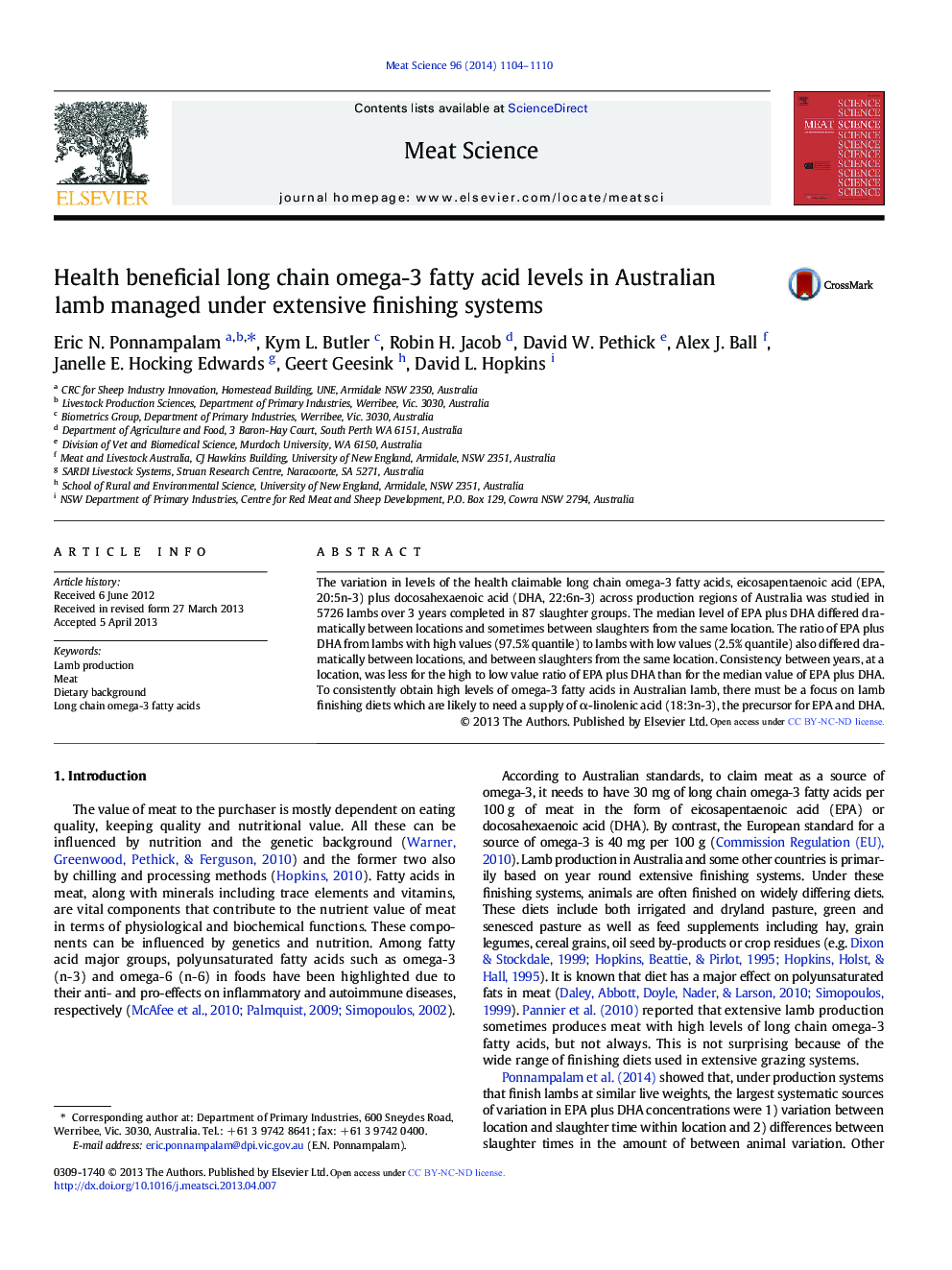| Article ID | Journal | Published Year | Pages | File Type |
|---|---|---|---|---|
| 5791559 | Meat Science | 2014 | 7 Pages |
â¢The omega-3 fatty acid content in lambs produced across Australia was examined.â¢Omega-3 fatty acid levels differ greatly with location and slaughter times.â¢Between animal variability in Omega-3 fatty acid also differs greatly.â¢Nutritional background might be the reason for these differences between locations.â¢The level of omega-3 fatty acid in lamb meat can be elevated by the finishing diet.
The variation in levels of the health claimable long chain omega-3 fatty acids, eicosapentaenoic acid (EPA, 20:5n-3) plus docosahexaenoic acid (DHA, 22:6n-3) across production regions of Australia was studied in 5726 lambs over 3 years completed in 87 slaughter groups. The median level of EPA plus DHA differed dramatically between locations and sometimes between slaughters from the same location. The ratio of EPA plus DHA from lambs with high values (97.5% quantile) to lambs with low values (2.5% quantile) also differed dramatically between locations, and between slaughters from the same location. Consistency between years, at a location, was less for the high to low value ratio of EPA plus DHA than for the median value of EPA plus DHA. To consistently obtain high levels of omega-3 fatty acids in Australian lamb, there must be a focus on lamb finishing diets which are likely to need a supply of α-linolenic acid (18:3n-3), the precursor for EPA and DHA.
